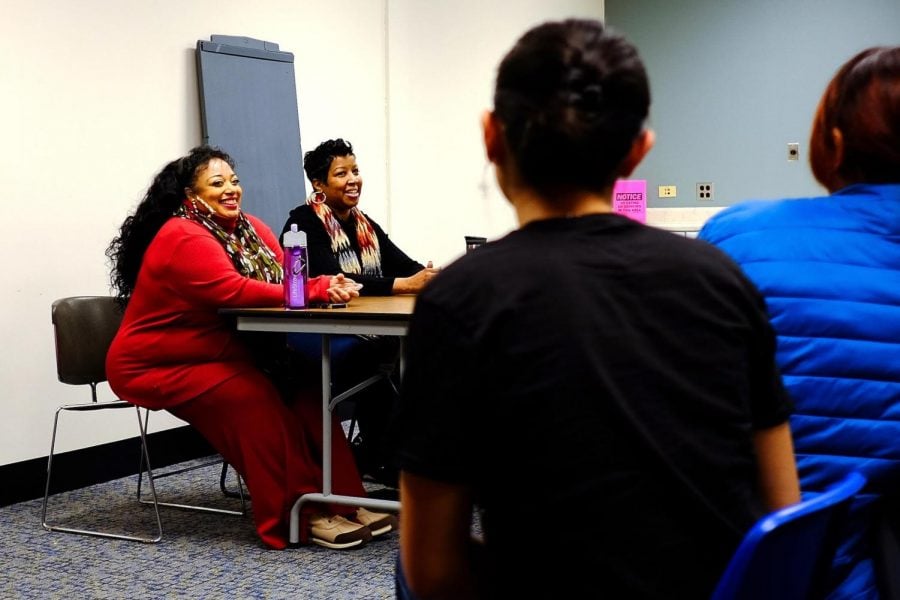Chicago Torture Justice Center works to expand reparations for police violence
Courtesy of the Center for Civic Engagemen
Aislinn Pulley, co-executive director of the CTJC, and panelist La Tanya Jenifor Sublett.
February 9, 2020
Northwestern students traveled to the Chicago Torture Justice Center on Saturday to attend a panel on the history of police torture in Chicago and the future of the reparations ordinance in the city.
In 2015, the Chicago City Council unanimously approved the reparations ordinance put forward by city counselor Joe Moreno, and became the first municipality in the United States to provide reparations for racially motivated law enforcement violence. The ordinance was created to address the violence that occurred under Chicago police detective Jon Burge from 1972 to 1991. Burge led detectives in his South Side police district in torturing more than 100 black men to secure confessions. He was never prosecuted for his alleged crimes, including electrocution and smothering.
The ordinance provides financial compensation and free college education for victims of police violence, as well as a counseling center, public memorial, formal apology and education on police torture in Chicago public schools.
Co-executive director Aislinn Pulley said since its creation, the counseling center for Burge torture survivors became the Chicago Torture Justice Center and is working to expand the ordinance to include more survivors of police torture.
The Center for Civic Engagement and Asian American Studies co-sponsored the lecture, site visit, and panel that brought around 40 Northwestern students and faculty.
“The reparations ordinance is a historic win,” Pulley said. “That does not by any means mean that justice has been served.”
Panelist La Tanya Jenifor Sublett said at age 19, she went to the Chicago Police Department to turn in the perpetrator of a murder and provide information to detectives, who then suspected she had committed the crime. After 12 hours of interrogation and torture by police, Sublett signed a false confession statement. Two years later, she was sentenced to 42 years in prison for a crime she did not commit.
“That is the system that we live in,” Sublett said. “That is the city that we live in.”
Sublett said she exhausted every judicial method to get out of prison and faced even more challenges upon re-entering society after 21 years in jail.
Seven years after her release, Sublett became a speaker and activist for the Chicago Torture Justice Center. She said her activism has given her the opportunity to hear from women with similar stories.
“I accept being the face even though sometimes at night after I hear stories from other women, I have to turn my face to the wall and cry for them because they won’t tell anybody,” Sublett said. “I used to be her.”
Weinberg freshman Kahsaia de Brito said the experience taught her the importance of talking about the mistreatment of racial minorities in history.
“The more that these issues are talked about, the more support they’ll get,” de Brito said. “Northwestern students have a goal to be civically engaged and create positive change and just knowing that this is one way to do that is important.”
The Center is currently working to spread awareness on torture survivor Gerald Reed who has been incarcerated for 29 years and has remained in prison 14 months after his conviction was overturned. They are currently preparing to enter what will likely be a long battle to expand the reparations ordinance in Chicago.
“You can call it reparations but sometimes it’s just called equity,” Sublett said.
Email: [email protected]
Twitter: @samanthaguilar7


